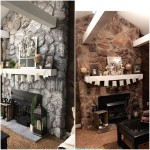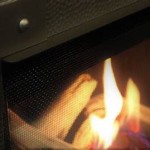Duraflame Electric Fireplace Not Blowing Heat: Troubleshooting and Solutions
Duraflame electric fireplaces offer a convenient and visually appealing alternative to traditional fireplaces. They provide supplemental heat and ambiance without the need for chimneys, gas lines, or wood. However, owners may occasionally encounter issues, such as the fireplace not blowing heat as expected. Understanding the potential causes and troubleshooting steps can help resolve these problems and restore the fireplace to its proper functionality.
When a Duraflame electric fireplace fails to produce heat, a systematic approach to diagnosis is crucial. A range of factors, both simple and complex, can contribute to this malfunction. Examining the fireplace's settings, electrical connections, and internal components, as well as considering environmental factors, is necessary to identify the cause and implement the appropriate solution.
Checking Basic Settings and Connections
The first step in troubleshooting a Duraflame electric fireplace that is not blowing heat involves verifying the most basic settings and connections. Often, a simple oversight is responsible for the apparent malfunction. Ignoring these fundamental checks can lead to unnecessary complexity and frustration.
Begin by confirming that the fireplace is properly plugged into a functioning electrical outlet. Test the outlet with another appliance to ensure that it is delivering power. A tripped circuit breaker or a blown fuse could be preventing the fireplace from receiving electricity. Check the circuit breaker panel and reset any tripped breakers. Examine the fuse box and replace any blown fuses. Sometimes, the outlet itself might be faulty and require repair by a qualified electrician.
Next, ensure that the fireplace's power switch is in the "on" position. Many Duraflame electric fireplaces have a main power switch in addition to the thermostat control. Verify that the thermostat is set to a temperature higher than the current room temperature. If the thermostat is set too low, the heating element will not activate. Increase the thermostat setting and observe if the fireplace begins to blow heat. Refer to the owner's manual for the specific location of the power switch and thermostat controls, as these may vary depending on the model.
Some Duraflame electric fireplaces have a timer function. Make sure this function is not inadvertently activated, preventing the heater from turning on at the desired time. Review the timer settings and disable them if necessary. Similarly, some models incorporate a sleep mode, which may automatically turn off the heating element after a set period. Deactivate the sleep mode to ensure continuous heat output.
Examining the Heating Element and Fan
If the basic settings and connections are verified and the fireplace still fails to blow heat, the next step is to examine the heating element and fan. These are the primary components responsible for generating and distributing heat, and a malfunction in either can result in a lack of heat output.
The heating element is typically a resistive coil that heats up when electricity passes through it. Over time, the heating element can burn out or become damaged, preventing it from generating heat. Visually inspect the heating element for any signs of damage, such as breaks, cracks, or excessive corrosion. However, it is crucial to disconnect the fireplace from the power source before attempting any visual inspection or repairs. Repairing or replacing a heating element is generally best left to a qualified technician.
The fan is responsible for circulating the heat generated by the heating element into the room. If the fan is not functioning properly, the heat will remain trapped inside the fireplace, preventing it from being distributed. Listen closely to the fireplace when it is turned on. If the fan is not audible, it may be malfunctioning. Check for any obstructions that may be blocking the fan blades, such as dust, debris, or foreign objects. Carefully remove any obstructions using a soft brush or vacuum cleaner. If the fan blades are free of obstructions but the fan still does not operate, the fan motor may be defective and require replacement. Replacement of the fan motor should also be undertaken by a qualified technician.
Dust accumulation within the fireplace can also hinder the performance of the heating element and fan. Dust can act as an insulator, preventing the heating element from efficiently radiating heat. It can also clog the fan blades, reducing their ability to circulate air. Regularly clean the interior of the fireplace with a vacuum cleaner or soft brush to remove any accumulated dust and debris. Refer to the owner's manual for specific cleaning instructions.
Addressing Potential Safety Features and Overheating Issues
Duraflame electric fireplaces are equipped with several safety features designed to protect the unit and the surrounding environment. These safety features can sometimes inadvertently prevent the fireplace from blowing heat if certain conditions are met. One of the most common safety features is an overheat protection system.
The overheat protection system is designed to automatically shut off the heating element if the fireplace becomes too hot. This prevents damage to the unit and reduces the risk of fire. If the fireplace has overheated, it may automatically shut down and will not resume operation until it has cooled down. Allow the fireplace to cool down completely before attempting to turn it back on. The specific reset procedure may vary depending on the model, so consult the owner's manual for instructions.
Overheating can be caused by several factors, including restricted airflow, excessive dust accumulation, or a malfunctioning thermostat. Ensure that there is adequate space around the fireplace for proper ventilation. Do not block the air vents with furniture or other objects. Regularly clean the interior of the fireplace to remove any accumulated dust, as described in the previous section. If the thermostat is malfunctioning, it may be causing the heating element to overheat, triggering the safety shutdown. A faulty thermostat should be replaced by a qualified technician.
Another potential safety feature is a tip-over switch. This switch is designed to automatically shut off the fireplace if it is accidentally tipped over. Ensure that the fireplace is placed on a stable and level surface to prevent it from tipping over. If the fireplace has been tipped over, it may be necessary to reset the tip-over switch before it will resume operation. The reset procedure may vary depending on the model, so consult the owner's manual for instructions.
By systematically checking the settings, connections, heating element, fan, and safety features, the cause of a Duraflame electric fireplace not blowing heat can often be identified and resolved. However, if the problem persists, it is recommended to consult a qualified technician for further assistance. Attempting repairs without proper knowledge and experience can be dangerous and may void the warranty.

Let S Fix The Fire Light In This Duraflame 1500 Watt Infrared Electric Heater Dfi 7025 01

Electric Fireplace Not Blowing Heat

Let S Fix The Fire Light In This Duraflame 1500 Watt Infrared Electric Heater Dfi 7025 01

Review We Tested The Duraflame Electric Fireplace 2024

Duraflame 21 W Maxwell Electric Stove Heater Black Com

Duraflame 19 5 In W 5200 Btu Black Metal Infrared Quartz Electric Stove With Thermostat The Stoves Department At Com

Duraflame 19 5 In W 5200 Btu Black Metal Infrared Quartz Electric Stove With Thermostat The Stoves Department At Com

Duraflame 1 000 Sq Ft Infrared Quartz Electric Fireplace Stove Heater Blue Com

Duraflame 174 Infrared Quartz Stove Heater With Remote Control At Com

Duraflame 25 9 In W 5200 Btu Black Metal Infrared Quartz Electric Stove With Thermostat And Remote The Stoves Department At Com
Related Posts








